#Chile Central Valley
Text
Marques de Casa Concha - Exploring the Microclimates of Chile’s Central Valley
Marques de Casa Concha – Exploring the Microclimates of Chile’s Central Valley
Chile’s Central Valley is the country’s ancestral home for winemaking, with sun-drenched valleys, cooling breezes from the Andes Mountains and the Pacific Ocean, and well-drained, infertile soils. Here, there is a kaleidoscope of microclimates for a winemaker to work with and winemaker Marcelo Papa has made it his life’s work to discover and match the right grape with its ideal terroir, creating…
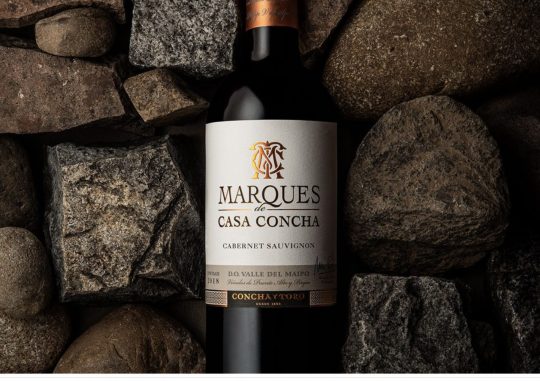
View On WordPress
0 notes
Text
Burnt Gold
A most offensive nose of burnt rubber and grimy earth impacts on first pour–decanted heavily. As I suspected, it somewhat blows off, revealing a muddy melange of ruddy ripeness lacking much complexity. I *hope* this isn’t from my friends at Goldschmidt in Alexander Valley, as they typically make rather decent wines across all price-points. The smell of this wine is dreary and off-putting in ways…

View On WordPress
#Best wine reviews#Cabernet Sauvignon#Central Coast Critic#Chile#Goldschmidt#Goldschmidt Vineyards#Guidepost#RApel VAlley#soif#Soif Wine Blog#Stephen McConnell#Stephen McConnell Wine Blog#Steve McConnell Wine Blog#wine1percent
1 note
·
View note
Text
Château Los Boldos Amalia Grand Cru 2018

View On WordPress
#Château Los Boldos#Château Los Boldos Amalia Grand Cru 2018#FB 92#Rapel Valley#Sogrape#Vale Central#Vale do Cachapoal#Viña Los Boldos#Vinhos do Chile#Vinhos Provados
0 notes
Text

Santiago de chile, Chile: Santiago also known as Santiago de Chile, is the capital and largest city of Chile and one of the largest cities in the Americas. It is located in the country's central valley and is the center of the Santiago Metropolitan Region. Most of the city is situated between 500–650 m above sea level. Wikipedia
104 notes
·
View notes
Text
In central Chile, not far from where the Andes Mountains meet the Pacific Ocean, a vast swath of pristine wilderness is changing hands under the most unusual circumstances.
Roberto Hagemann, a Chilean businessman who owns the 325,000-acre property, has agreed to sell the land to his longtime adversaries, a band of upstart environmentalists who spent years thwarting his efforts to develop the property.
The price: $63 million.
It is a landmark transaction that will preserve some of the most ecologically significant territory in South America. Known as Hacienda Pucheguin, the property is surrounded by national parks and is cut by wild rivers, forests of ancient Alerce trees and the Cochamó Valley, a cathedral of towering granite walls popular with rock climbers around the world.
The deal is also a case study in modern-day conservation. At a moment when ecologically sensitive lands are under threat around the globe, it takes a unique confluence of legal, financial and political resources — plus a bit of luck — to protect them from relentless development.
106 notes
·
View notes
Text
Big week for news about “mountain lions wandering back into historic habitat where they were once persecuted to extinction” in February 2023.
---
Central Texas:

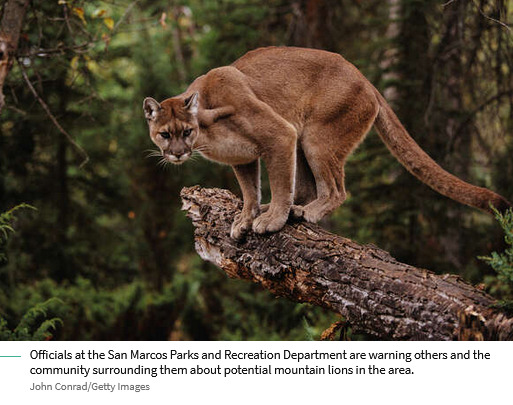
Headline and screenshots from: Priscilla Aguirre. “Potential mountain lion sighting in San Antonio area raises awareness.” My San Antonio. 14 February 2023.
Excerpt from this article: Officials at the San Marcos Parks and Recreation Department are asking others and the surrounding areas to be cautious about potential mountain lions in Central Texas. Officials said the message comes after the department received a call about a potential sighting of a mountain lion at Upper Purgatory Creek Natural Area in San Marcos on Sunday, February 12. [...] In Central Texas, it’s extremely rare to see a mountain lion in person, according to a report from the San Antonio Express-News. [...] Only one mountain lion has been confirmed in Bexar County in the past decade, on November 24, 2013, according to TPWD. [End of excerpt.]
---
Great Plains and Nebraska:

Headline and screenshot from: Damon Bennett. “Nebraska mountain lion now looking for a name after 700-mile journey.” Lincoln Journal-Star. 16 February 2023.
Excerpt from this article: A Nebraska mountain lion that found itself in a sanctuary in Indiana after a 700-mile journey through four states is now looking for one last souvenir: a name. Back in the fall, the big cat made its way from the scenic Niobrara River valley all the way to suburban Springfield, Illinois, according to the GPS tracker that Nebraska Game and Parks had tagged it with a year prior. "A lot of people were watching him," said [the director of an “exotic feline rescue center”] in Center Point, Indiana, where the mountain lion has been since October. When the lion overstayed its welcome near Springfield, it was sedated by federal wildlife officials, who offered to return it to Nebraska. Nebraska declined.’ [...] "I'm incredibly impressed with this animal; he crossed both the Missouri and Mississippi rivers [...]." [End of excerpt.]
---
Ozarks and Missouri:

Headline and screenshot from: Julia Wilson. “Mountain lions in Missouri? We’re seeing more than usual this winter.” Columbia Missourian. 16 February 2023.
Excerpt from this article: Footage from a trail camera taken Jan. 3 confirmed that a roaming mountain lion made a rare appearance in northern Boone County. Since then, the Missouri Department of Conservation documented three additional sightings around the state last month — one in Callaway County, another in Montgomery County and a third that was hit by a vehicle south of St. Louis. Reports of mountain lions, also known as cougars, pumas and panthers, have increased over the past decade in the state. Between 2013 and 2022, a total of 65 were counted around Missouri. Compare that to the years between 1994 and 2006, when only 12 were spotted. [...] The animals may come from an established colony in the Black Hills, cross Nebraska and wander into Missouri, according to the Kansas Department of Wildlife and Parks. Missouri’s extensive forest coverage, which includes 35% of state acreage, then becomes an ideal destination for the animals. Mountain lions have roamed Missouri since pre-settlement times. Their range crosses the western hemisphere from Canada to southern Chile. [...] Although they are seen across the state, over half of all sightings have been documented within 40 miles of Mark Twain National Forest in southeast Missouri. [...] Trophy hunting by early colonists wiped out most of the population east of the Mississippi River. [...] Except for the recent encounter in Franklin County where a lion was hit by a vehicle, the last documented human contact occurred in December 2021 during another vehicle collision. [End of excerpt.]
---
For reference:

205 notes
·
View notes
Text
Do the recent or right-now-ongoing crazy global weather scare you? Bother you? Interest you?
I'm pulling this from various media sources, because there is so much crazy weather happening now, or that has happened within the last couple of weeks, it seems like no single media source is picking it up.
From Heatmap AM:
Houston’s floods – More than 400 people in and around Houston, Texas, evacuated their homes over the weekend due to flooding. At least one person, a child, was killed. In one nearby county, more than 21 inches of rain fell over five days last week. The rain has tapered off but the cleanup has just begun.
Brazil’s rain – In Brazil’s southern state of Rio Grande do Sul, days of intense rain caused the Guaiba River to overflow and flood more than 340 cities, including the region’s capital of Porto Alegre. At least 78 people are dead and more than 115,000 have been forced to evacuate. One climatologist calledthe catastrophe “a disastrous cocktail” of climate change and the El Niño effect. “It looks like a scene out of a war,” said Rio Grande do Sul governor Eduardo Leite.
Chile’s fires – Fires in Chile’s Valparaiso region, fueled by an intense heat wave and enduring drought, have killed at least 51 people and burned more than 64,000 acres.
Kenya’s deluge – Flooding and landslides in Kenya from unrelenting rainfall have killed more than 200 people. It is still raining and the weather is forecast to worsen throughout the month of May.
Southeast Asia’s heat wave – A lengthy heat wave has shattered temperature records across Southeast Asia, forcing many schools to close. One weather historian called the heat wave “the most extreme event in world climatic history.”
From the Associated Press (AP):
A weekend spring storm that drenched the San Francisco Bay area and closed Northern California mountain highways also set a single-day snowfall record for the season on Sunday (May 5) in the Sierra Nevada. The wet weather system had mostly moved out of the state by Sunday morning, but officials warned that roads would remain slick after around two feet (60 centimeters) of snow fell in some areas of the Sierra. “Did anyone have the snowiest day of the 2023/2024 season being in May on their winter bingo card?” the University of California, Berkeley Central Sierra Snow Lab asked on the social platform X. The 26.4 inches (67 centimeters) of snowfall on Sunday beat the second snowiest day of the season — March 3rd — by 2.6 inches (6.6 centimeters), according to the lab.
From Yale Climate Connections:
For the first time since the 2010s, a high-risk outlook for severe weather (level 5 of 5) has been issued for parts of the Great Plains. The outlook was put in place at 8 a.m. EDT Monday, May 6, and updated at 12:30 p.m. EDT Monday by the NOAA/National Weather Service Storm Prediction Center, as a busy few days of severe weather moved into high gear. Dozens of tornadoes could erupt by midweek, including in and near Oklahoma on Monday and across a broad swath of the mid-Mississippi and lower Ohio River valleys on Wednesday. Many of the worst tornado U.S. outbreaks of recent years have played out across the Mississippi Valley and Southeast, but multiple rounds of twisters have hammered the Plains since late April, taking at least seven lives and wreaking what will no doubt be hundreds of millions of dollars in damage.
From Wikipedia:
On 16 April 2024, heavy rains caused floods in the United Arab Emirates, affected cities of mainly Dubai and Sharjah, the northern Emirates, and different areas of the Emirate of Ras Al Khaimah. According to the National Center for Meteorology (United Arab Emirates) , this was the country's heaviest rainfall recorded in 75 years. The floods in the Emirates were a part of the greater Persian Gulf floods.
14 notes
·
View notes
Text
Golden Grains: The Flourishing Barley Industry in Latin America

Barley Production in Latin America
History and Development of Barley Farming
Barley has a long history of cultivation in Latin America, dating back to periods of colonial rule when European settlers first brought the crop to the region. Initially barley was mainly grown for livestock feed, as many areas were well suited to pasture-based animal agriculture. Over time barley began to be used more for human consumption as well, as brewing industries developed and barley emerged as a popular ingredient in beers, spirits and foods throughout Latin America.
Early barley varieties cultivated in Latin America were often six-row types common to Europe at the time. However, farmers eventually began selecting strains better adapted to local growing conditions like heat, drought and diseases. Two-row varieties in particular proved hardier and yielded more consistently than six-row types. By the late 19th century, improved two-row varieties from Canada and other parts of North America were being introduced and adopted across much of Latin America.
Major Barley Producing Nations
Argentina is currently the largest barley producer in Latin America, growing over 4 million tons annually on over 1.5 million harvested hectares. The vast Pampas region is highly conducive to barley with fertile soils and a climate resembling the Mediterranean. Nearly all Argentine barley is malting quality, destined for use in beer.
Mexico is also a substantial barley grower, producing around 650,000 tons per year. The high plains and valleys of Northern Mexico near the U.S. border have semi-arid conditions well suited to barley. Much Mexican barley goes to domestic breweries and distilleries.
Other significant barley growing nations in Latin America include Chile, which harvests around 300,000 tons from its central valley regions, as well as Colombia, Ecuador, Peru and Venezuela, each producing 50,000-150,000 tons annually focused on regional malting and brewing needs.
Varieties, Production Practices and Yields
The vast majority of barley grown in Latin America is spring-planted, as winter temperatures remain above freezing across much of the region. Common varieties include MCC and INTA which have shown good disease resistance, yield potential and malting qualities in Argentina. In Mexico popular varieties include Baguette, Nevada and Antelope due to adaptability in the arid north.
Standard barley production practices in Latin America incorporate tillage, seed treatments, fertilization and weed/pest control as needed. Irrigation is important in many areas to ensure adequate moisture during critical growth stages like flowering and grain fill. With modern hybrids and optimal conditions, average barley yields in Latin America range from 2.5-4 tons per hectare, comparable to yields in other major barley growing regions worldwide.
End Uses and Markets
By far the largest portion of barley grown in Latin America, around 80-90%, is utilized for malt in beer production. Leading brewing companies sourcing Latin American barley include Anheuser-Busch InBev, Heineken, Grupo Modelo and Quilmes. The remainder of barley production is often sold as livestock feed, particularly in Argentina which has a large animal agriculture sector.
Growing export markets for Latin American malting barley include Mexico shipping to the United States under NAFTA, and Argentina exporting to Asia as well as major maltsters in Europe and North America. Regional trade also exists, such as Chile exporting to breweries in other South American nations. With steady yield gains and quality improvements, Latin America's barley industry continues to expand avenues for trade on the global stage.
Future Prospects and Challenges
Nonetheless, further increases in barley yields will depend on ongoing varietal improvement, adequate irrigation infrastructure and climate change adaptation. Rising temperatures and variable rainfall bring risks of drought stress and disease pressures. Water scarcity and competition from other crops also pose threats.
2 notes
·
View notes
Photo
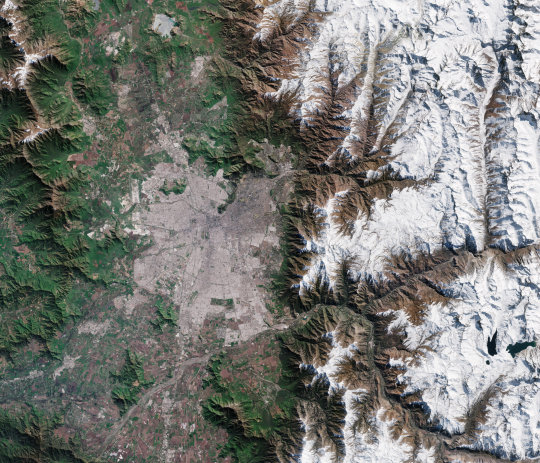
Earth from Space: Santiago, Chile Santiago lies in the center of Chile's most densely populated region, the Santiago Metropolitan Region, with a population around eight million, of which five million live in the city's urban area. Santiago is spread over more than 600 sq km with most of the city lying between 500 to 650 m above mean sea level. The weather of Santiago resembles the Mediterranean climate with dry and warm summers with temperatures reaching up to 35°C (from October to March) and cool and humid winters that can drop to 0°C (from April to September). The city lies in the center of the country's central valley around 80 km from the Pacific Ocean to the west and borders Argentina to the east. A tiny part of Argentina is visible in the top-right corner of the image where the mountain crest of the Andes Mountains acts as a divider between the two countries. Cerro El Plomo, 5424 m, is the largest mountain peak visible from Santiago on clear days. There are many ski resorts in the snow-covered mountains, as well as viewpoints offering spectacular views of Santiago. The Maipo River runs south of the city coming from the mountains and is the main river flowing through the Santiago Metropolitan Region and the Valparaíso Region of Chile. The Maipo River is by far the major source of irrigation and drinking water for the region. The Mapocho River, which flows through central Santiago, is one of its tributaries. In the top of the image lies the Los Bronces copper mine and it represents one of the largest copper reserves in Chile. The Paloma Glacier lies just south of it. Las Tórtolas, visible in the top of the image, is an artificial lake that is used for processing the copper ore that comes from Los Bronces through an extensive network of pipes. Copernicus Sentinel-2 data are not only used to monitor plant growth, but also to map changes in land cover, and monitor the world's forests as well as inland and coastal waters. The mission is based on a constellation of two identical satellites in the same orbit, 180° apart for optimal coverage and data delivery. Together they cover all Earth's land surfaces, large islands, inland and coastal waters every five days at the equator.
17 notes
·
View notes
Text
Second month recap: July
Driving away from Sleeping Giant on 1st August means I've already completed two full months in the road!! Wow!! 🤩 And most amazingly, I still feel fantastic and am not ready yet to start going home by a long shot... 😁 in fact, I'm starting to get a bit concerned about everything that I still want to do in the remaining time, but I'm sure I'll figure it out!
I forgot to check the odometer but it was probably at around 67500 so that means I drove another 6,000 kilometers in the second month and slightly under 13,000 km in total. I still stick mostly with camping two nights in a row in a park (where I drive the absolute minimum), followed by a series of motels/inns/hotels when I drive larger distances, typically 3-4 hours a day interspersed with several breaks at viewpoints, small hikes, towns etc to get a feel of the area. I generally aim to arrive at my sleeping place by 6-7pm latest so that I have enough time to settle in before it gets dark (long summer hours help!) but once in a while I get there earlier around 3-4pm to get a lazy afternoon. And sometimes I only start at 10-11am taking it easy in the morning, especially when it's crappy weather 😅. The joy of absolute freedom to choose how I spend my days!! 🥰❤
I can hardly believe where I was at the end of the first month as that feels such a long time ago... in Matane in the Gaspesie, Québec. So last month, I did the entire Labrador loop which included a large section of unpaved road and more boreal trees than I ever imagined 😝. Got delayed on the cargo boat back to Québec so that resulted in some last minute changes to hotels and tours, then the ever-impressive sea along the Cote Nord all the way west to Québec City, several pretty national parks in central Quebec that were unfortunately impacted by flooding, a stay-over in Montreal and then along the Ottawa Valley via North Bay - Sudbury - Sault Ste Marie to the spectacular scenery of Lake Superior! 🎉 The diversity in the natural environment from maritime to boreal, from sea cliffs to inland canyons & massive lakes is so incredibly huge, and I'm only half way, as the Prairies and the Rockies are still ahead of me! 😍😍
What is constant though throughout is the friendliness of the people I meet, whether it's the staff at the visitor centres and in the parks, other campers or restaurant guests, or even if it's only a short "great day isn't it?" when you're passing each other on the trail or on the water. Canadians are rightly proud of their local area as well as their country, and are truly wanting to share that with others.
I've also come to realize I'm not alone in wanting to pursue my dreams as many have done so before me; from the scallops farmer in Québec to the inn owner in Ontario, several have shared with me their life trajectory often having moved away from the busy corporate/urban life to focus on what's important to them. No one has perhaps dared to tell me I'm crazy 😜 and it's surprising how many people can in some way relate to Chile 😅 so that makes me hopeful for the future!
Lastly, I wanted to share my reflection on the role that cross-country retailers like Canadian Tire, Tim Hortons and to some extent grocery stores and gas stations play in comforting travelers like me and unifying Canada as truly one country... as part of my job, I've ofcourse always known that CT has 507 stores across Canada but I've never felt what that means until now. When driving for 100-300kms in the middle of inhospitable forest without cell reception and literally only a handful of sideroads and buildings, it's comforting to know that at the end of it there will always be a place to e.g. buy a cup of tea & a donut or propane & kindling 😅. Typically, both CT and Tim Hortons will have signs 5-10km upon approach of a town (though mostly run down and overgrown 😉) and there's a real sense of relief & joy that I've been feeling seeing those signs; a combo of gladness that my car didn't break down or was hit by a moose/bear, and of happiness to be back in the familiar human realm (something like that, not sure how to explain). Secondly, it's also unifying to see the same brands in so many different places, as that creates a bond between all Canadians (in contrast, if you would drive equal distance in Europe you would likely have crossed a border with each country having its own brands/language etc). Having the same stores with the same products everywhere you go in Canada creates a commonality that clearly says: I am in Canada 🇨🇦 (actually, because CT stores are built on a standard proto design, I bought firestarters in exactly the same aisle in Pembroke as in Dryden 🤣)... I don't think this comforting & unifying aspect is apparent when you live in an urban area or only travel locally, but this roadtrip has increased my appreciation of both these Canadian brands (and I'm really not a big Tim Hortons fan although the branch in Marathon was phenomenal) .
I've rambled long enough now and need to light the fire 😃, so here's my top ten-ish of best experiences for the second month in chronological order. Scroll to my previous blogs for pictures!
1. Driving the Labrador loop including the expansive boreal forest and the Manic-5 hydro dam, QC/NL
2. Staying at Battle Harbour Island, NL
3. Seeing icebergs on the trails at Red Bay and L'Anse au Clair, NL
4 Taking the cargo boat from Blanc-Sablon to Kegashka, QC
5. Touring the Mingan archipelago (both west and east islands), QC
6. Whale watching at Cap de Bon-Désir & the Marine Discovery Centre, QC
7. Hiking the Mont du Lac-des-Cygnes at Grands-Jardins, QC
8. Meeting Nabil and spending the day in Vieux-Montreal, QC
9. SUPping at Barron Canyon & Restoule, ON
10. Hiking the pictographs trail at Lake Superior & the coastal trail at Pukaskwa parks, ON
11. Paddling on Lake Superior, ON
12. Guided PoW camp hike at Neys provincial park, ON
There's a few that I omitted such as the Manitou waterfall in eastern Québec, park La Mauricie and the Ouimet Canyon that are must-do's if you're in the area but I can't simply name everything that I did! 😉
I'll need to create better Gmaps next time I have internet on my laptop!
2nd month travel;

Total travel since 1st June;

2 notes
·
View notes
Text
Day 17 - Cusco
We wake up at 7am as we are still on Rio time and get a delish breakfast cooked at our B&B. The accomodation is really nice - all centred around a courtyard with flowers everywhere.
We noticed that our hands and feet have pins and needles and wonder if it’s the altitude sickness kicking in but it turns out to be a side effect of Diamox - the medication we are taking to avoid the altitude sickness. I do have a bit of a headache today but nothing too much.
I make a quick pitstop to the ATM (the free one only allows 400 soles per card per day) and to buy Boleto Toristico - this costs S/130 each but allows us access to heaps of historical monuments in and around Cusco for the next 10 days.
After Jack is ready our first stop is Plaza de Armas. Cusco is such a cute city - the historic centre is full of historic buildings (albeit some in the main square had been turned into Maccas, KFC and Starbucks) and the flowers in the main square were meticulously maintained. People definitely seem to speak much better English here than elsewhere we have visited. Also everyone here seems to be so much friendlier than Argentina or Brazil! And as a bonus I feel so tall here - Peruvians are one of the shortest average heights in the world! We stop in one of the balcony cafes overlooking the Plaza de Armas for a coffee.
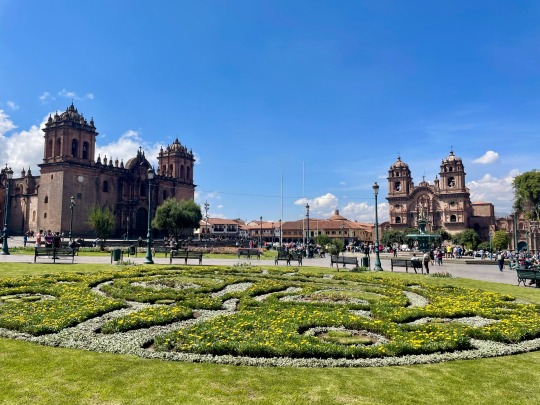

A few other observations we have made about Cusco - it must have the highest number of barbers per capita in the world!! Also the city is much bigger than we had expected. It’s not just a tourist town as was the case for Puerto Iguazú - people are living their everyday lives here too. The streets and footpaths here are sooo narrow (and the traffic and pollution is pretty bad).
We quickly realise that even though it was cold last night, in the sun today it’s baking so we head back to the room via the chemist to get sun screened up.
The second stop is San Pedro Central markets where we pick up some souvenirs and stop for an empeñada for lunch (plus custard flan - this seems to be a thing here - set custard in a glass).


On the way out we realise that heaps of kids are leaving school and think that it seems early to finish up (1pm-ish). However, we also notice that they are all carrying gifts for their mums for Mother’s Day. It’s so cute!!
Our third stop of the day is Qorikancha (the most important temple in the Inca empire). It contained the Temple of the Sun. When the Spanish arrived they destroyed much of the site but as with much of the other Inca ruins they used the foundations and first story walls to build on top of and create Santo Domingo Church. Cusco (and Qorikancha) were the centre of the Inca empire. There were 4 states surrounding Cusco covering areas south into Chile and Argentina and north as far as Ecuador.

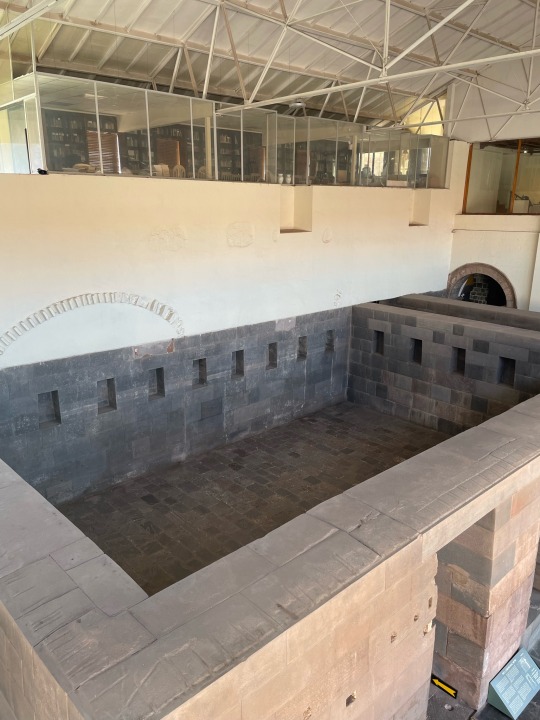
Our next stop is Saqsaywaman, it’s a huge citadel on the outskirts of Cusco. We were thinking of walking as it was only 25mins from Qorikancha but we ordered an Uber. Thank goodness we did as it was all up a very steep hill. Once we got there we still had to walk up many more steps to enter the site where the car could not access. This is where we really struggled - simply walking up some steps at this altitude feels like you’ve ran a marathon! Anyway after taking a break and drinking lots of water we made it to the top.
Saqsaywaman’s purpose is thought to be as a fortress, and of course as a temple and for religious ceremonies. The site is absolutely huge but there is little information so without a guide it isn’t easy to understand what we are seeing. The name Saqsaywaman means full eagle, this is thought to be because the last Incan resistance battle took place here against the Spanish and a large number of Incans would have been killed on the flat open grounds which would have attracted eagles. After their success the Spanish dismantled much of the site and used the stones for construction in the city.
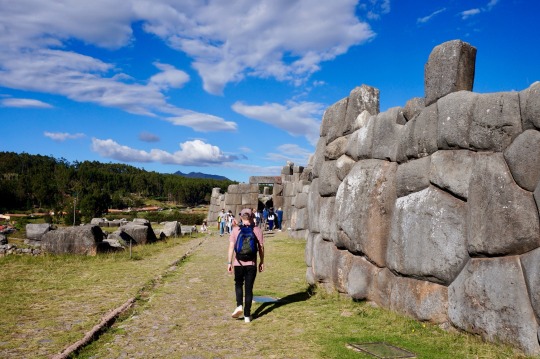
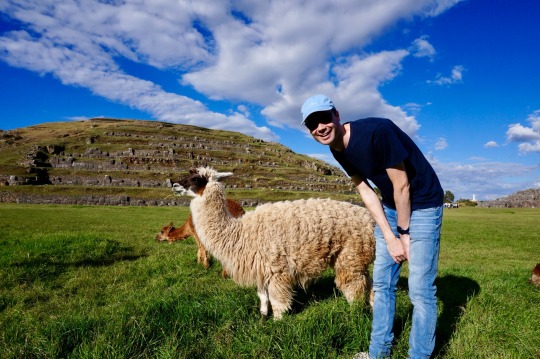
Time to pack up our bags again, we are off to the Sacred Valley tomorrow. For dinner we head out to a top rated restaurant in Cusco “Moray” - they seem to specialise in modern Peruvian cuisine. Jack has alpaca tenderloin whilst I order the Aji de Gallina (Creamy Chicken with rice and potatoes). Both are really good!! Back to the hotel it is.

0 notes
Text
Analyzing the Chile Beverages Market by Capacity, and Region
Analyzing the Chile beverages market by capacity and region provides insights into the consumption patterns, preferences, and market dynamics within different geographic areas and across various beverage categories.

Buy the Full Report for More Category Insights into the Chile Beverages Market,
Download a Free Sample Report
Here's a breakdown of each aspect:
Capacity:
In the context of the beverages market, "capacity" refers to the volume of beverages consumed or produced within a specific timeframe. This can include both alcoholic and non-alcoholic beverages. Here's how the market can be segmented based on capacity:
Individual Consumption: This segment includes beverages consumed by individuals for personal consumption or on-the-go consumption. It encompasses single-serve beverages such as bottled water, soft drinks, energy drinks, and ready-to-drink (RTD) beverages. Individual consumption is influenced by factors such as convenience, portability, and taste preferences.
Household Consumption: Household consumption refers to beverages purchased for consumption within the home. This includes larger packaging formats such as multi-packs, family-sized bottles, and bulk purchases. Common beverages consumed within households in Chile include bottled water, carbonated soft drinks, fruit juices, and alcoholic beverages such as wine and beer.
Commercial Consumption: Commercial consumption encompasses beverages consumed in commercial settings such as restaurants, bars, cafes, hotels, and entertainment venues. This segment includes both on-premise consumption and sales of beverages for takeaway or delivery. Alcoholic beverages such as beer, wine, and spirits, as well as non-alcoholic beverages such as soft drinks and coffee, are commonly consumed in commercial settings.
Region:
Analyzing the Chile beverages market by region provides insights into geographical variations in consumption patterns, market dynamics, and preferences for different types of beverages. Here are some key regions within Chile:
Metropolitan Region (Santiago): The Metropolitan Region, centered around the capital city of Santiago, represents the largest market for beverages in Chile. It is home to a significant portion of the population and a concentration of urban consumers who have diverse preferences for both alcoholic and non-alcoholic beverages. The region also serves as a hub for beverage distribution and retail.
Valparaíso Region: The Valparaíso Region, including cities such as Valparaíso and Viña del Mar, is known for its coastal lifestyle and tourism industry. This region has a strong demand for beverages consumed in leisure and entertainment settings, including alcoholic beverages such as wine, pisco, and cocktails, as well as non-alcoholic beverages such as soft drinks and fruit juices.
Central Valley (Wine Region): The Central Valley region, encompassing wine-producing areas such as Maipo Valley, Colchagua Valley, and Casablanca Valley, is renowned for its wine production. It represents a significant market for premium wines, both domestically produced and imported, as well as other alcoholic beverages such as craft beers and spirits.
Southern Regions (Araucanía, Los Lagos): The southern regions of Chile, including Araucanía and Los Lagos, have a distinct cultural heritage and cuisine. Beverages such as mate (a traditional herbal tea), craft beers, and artisanal spirits may have a stronger presence in these regions, reflecting local preferences and traditions.
Northern Regions (Atacama, Antofagasta): The northern regions of Chile, including Atacama and Antofagasta, are known for their arid landscapes and mining industry. Beverages consumed in these regions may include bottled water, energy drinks, and soft drinks, catering to the needs of residents and workers in mining communities.
Conclusion:
Analyzing the Chile beverages market by capacity and region provides a comprehensive understanding of consumption patterns, market dynamics, and opportunities within different geographic areas and segments of the population. By recognizing regional variations in preferences and tailoring product offerings and marketing strategies accordingly, beverage companies can effectively target diverse consumer segments and optimize their market presence in Chile. Additionally, understanding capacity segmentation allows companies to identify opportunities for product development, distribution channels, and marketing initiatives that cater to individual, household, and commercial consumption preferences.
0 notes
Text
Events 3.23. (before 1940)
1400 – The Trần dynasty of Vietnam is deposed, after one hundred and seventy-five years of rule, by Hồ Quý Ly, a court official.
1540 – Waltham Abbey is surrendered to King Henry VIII of England; the last religious community to be closed during the Dissolution of the Monasteries.
1568 – The Peace of Longjumeau is signed, ending the second phase of the French Wars of Religion.
1775 – American Revolutionary War: Patrick Henry delivers his speech – "Give me liberty, or give me death!" – at St. John's Episcopal Church, Richmond, Virginia.
1801 – Tsar Paul I of Russia is struck with a sword, then strangled, and finally trampled to death inside his bedroom at St. Michael's Castle.
1806 – After traveling through the Louisiana Purchase and reaching the Pacific Ocean, explorers Lewis and Clark and their "Corps of Discovery" begin their arduous journey home.
1821 – Greek War of Independence: Battle and fall of city of Kalamata.
1839 – A massive earthquake destroys the former capital Inwa of the Konbaung dynasty, present-day Myanmar.
1848 – The ship John Wickliffe arrives at Port Chalmers carrying the first Scottish settlers for Dunedin, New Zealand. Otago province is founded.
1857 – Elisha Otis's first elevator is installed at 488 Broadway New York City.
1862 – American Civil War: The First Battle of Kernstown, Virginia, marks the start of Stonewall Jackson's Valley Campaign. Although a Confederate defeat, the engagement distracts Federal efforts to capture Richmond.
1868 – The University of California is founded in Oakland, California when the Organic Act is signed into law.
1879 – War of the Pacific: The Battle of Topáter, the first battle of the war is fought between Chile and the joint forces of Bolivia and Peru.
1885 – Sino-French War: Chinese victory in the Battle of Phu Lam Tao near Hưng Hóa, northern Vietnam.
1888 – In England, The Football League, the world's oldest professional association football league, meets for the first time.
1889 – The Ahmadiyya Muslim Community is established by Mirza Ghulam Ahmad in Qadian, British India.
1901 – Emilio Aguinaldo, only President of the First Philippine Republic, is captured at Palanan, Isabela by the forces of American General Frederick Funston.
1905 – Eleftherios Venizelos calls for Crete's union with Greece, and begins what is to be known as the Theriso revolt.
1909 – Theodore Roosevelt leaves New York for a post-presidency safari in Africa. The trip is sponsored by the Smithsonian Institution and National Geographic Society.
1913 – A tornado outbreak kills more than 240 people in the central United States, while an ongoing flood in the Ohio River watershed was killing 650 people.
1918 – First World War: On the third day of the German Spring Offensive, the 10th Battalion of the Royal West Kent Regiment is annihilated with many of the men becoming prisoners of war
1919 – In Milan, Italy, Benito Mussolini founds his Fascist political movement.
1931 – Bhagat Singh, Shivaram Rajguru and Sukhdev Thapar are hanged for the killing of a deputy superintendent of police during the Indian independence movement.
1933 – The Reichstag passes the Enabling Act of 1933, making Adolf Hitler dictator of Germany.
1935 – Signing of the Constitution of the Commonwealth of the Philippines.
1939 – The Hungarian air force attacks the headquarters of the Slovak air force in Spišská Nová Ves, killing 13 people and beginning the Slovak–Hungarian War.
0 notes
Text
Central Valley
Central Valley: Trái Tim Rượu Vang của Chile
Nằm ở phía trung tâm của Chile, là một trong những vùng trồng nho hàng đầu và là trung tâm của ngành công nghiệp rượu vang của quốc gia này. Với đất đai phong phú và khí hậu lý tưởng, Central Valley tạo ra những loại rượu vang đa dạng và chất lượng cao, từ các loại đỏ đậm mạnh đến các loại trắng mát mẻ.
Các loại nho được trồng tại Central Valley, bao gồm Cabernet Sauvignon, Merlot, và Sauvignon Blanc, thường được sử dụng để sản xuất rượu vang chất lượng cao với mức giá phải chăng. Với sự kết hợp của khí hậu ôn hòa và đất đai phong phú, rượu vang từ Central Valley thường mang hương vị tươi mới và đặc trưng của nho.
Mỗi chai rượu vang từ Central Valley là một biểu tượng của sự sáng tạo và đam mê của những người làm rượu, thể hiện sự độc đáo và chất lượng của vùng đất này. Hãy để mình bị cuốn hút vào thế giới huyền bí và hương vị tuyệt vời của Central Valley, nơi mà rượu vang là ngôn ngữ của sự tinh tế và đẳng cấp.

0 notes
Text
Monday, February 12, 2024
American allies worry the US is growing less dependable, whether Trump or Biden wins
(AP) As chances rise of a Joe Biden-Donald Trump rematch in the U.S. presidential election race, America’s allies are bracing for a bumpy ride. Many worry that a second term for Trump would be an earthquake, but tremors already abound—and concerns are rising that the U.S. could grow less dependable regardless of who wins. With a divided electorate and gridlock in Congress, the next American president could easily become consumed by manifold challenges at home—before even beginning to address flashpoints around the world from Ukraine to the Middle East. French President Emmanuel Macron’s recent verdict was blunt: America’s “first priority is itself.”
Winter Storm Could Bring Up to a Foot of Snow to Parts of the Northeast
(NYT) A winter storm is expected to move through the Northeast starting on Monday and lasting into Tuesday, bringing up to a foot of snow in some areas stretching from central Pennsylvania to the Catskills and Hudson Valley in New York, forecasters said. As of Saturday, the storm was over the Southern Plains in the southwestern United States, but over the next couple of days it will work its way east and then northeast. The heaviest snow is expected from northern Pennsylvania, far northwestern New Jersey and southern New York into interior southern New England, where locally a foot or more of snow could fall, said Bill Deger, a senior meteorologist for AccuWeather.
Brazil Has a Dengue Emergency, Portending a Health Crisis for the Americas
(NYT) Brazil is experiencing an enormous outbreak of dengue fever, the sometimes fatal mosquito-borne disease, and public health experts say it is a harbinger of a coming surge in cases in the Americas, including Puerto Rico. Brazil’s Health Ministry warns that it expects more than 4.2 million cases this year, outstripping the 4.1 million cases the Pan-American Health Organization recorded for all 42 countries in the region last year. Brazil was due for a bad dengue year—numbers of cases of the virus typically rise and fall on a roughly four-year cycle—but experts say a number of factors, including El Niño and climate change, have significantly amplified the problem this year. Dengue case numbers have already soared in Argentina, Uruguay and Paraguay in the last few months, during the Southern Hemisphere summer, and the virus will move up through the continents with the seasons.
Chile’s deadly wildfires wiped out neighborhoods. One stood unscathed.
(Washington Post) Heading up the hill, on the way to the neighborhood, everything looked black. On one side of the road, the charred remains of houses and the skeletons of trees. Beyond, the smoking husk of Chile’s national botanical garden. The air still carried the acrid smell of the historic wildfires that left at least 131 people dead, destroyed thousands of homes in the seaside Valparaíso region and plunged the Andean nation into mourning. But at the crest of the hill, there was a stunning sight. In this desert of ash and soot, an oasis. The neighborhood of Botania gleamed upon the hilltop, its neat rows of brightly painted houses undamaged. Cars sat undisturbed on its ash-free roads. Botania owes its escape to the disciplined execution of a fire prevention plan crafted by Chilean forestry officials and a local nongovernmental organization, with support from the U.S. government. For months, community leaders had bought supplies and prepared for the next big fire. “With tools and with training, good things can happen,” said Tim Callaghan, a senior USAID official. “And this is clearly a success.”
Short on Soldiers, Ukraine Debates How to Find the Next Wave of Troops
(NYT) Soldiers fight in freezing, muddy trenches bombarded by artillery, or in warrens of burned and blown-up houses in urban combat. Casualty rates are high, and dangerous missions, like storming enemy-held tree lines, abound. As they planned for a renewal of Ukraine’s military under extreme conditions, both the country’s former top commander and his replacement have emphasized the same looming problem: a need to relieve exhausted, battered troops whose combat tours have stretched nearly two years. While Ukraine relies on allies for weaponry, replenishing the ranks is a domestic challenge. Small protests have broken out in opposition to a Parliament proposal to expand the draft to include younger men, but so far, lawmakers have slow-walked the measure.
Shocking Opposition Victory Throws Pakistan Into Chaos
(NYT) The party of the imprisoned former prime minister of Pakistan, Imran Khan, won the most seats in parliamentary elections this week, delivering a strong rebuke to the country’s powerful generals and throwing the political system into chaos. While military leaders had hoped the election would put an end to the political turmoil that has consumed the country since Mr. Khan’s ouster in 2022, it has instead plunged it into an even deeper crisis, analysts said. Never before in the country’s history has a politician seen such success in an election without the backing of the generals—much less after facing their iron fist. In voting on Thursday, candidates from Mr. Khan’s party, Pakistan Tehreek-e-Insaf, or P.T.I., appeared to win about 97 seats in the National Assembly, the lower house of Parliament, the country’s election commission reported on Saturday. The military’s preferred party, the Pakistan Muslim League-Nawaz, or P.M.L.N., led by a three-time former prime minister, Nawaz Sharif, won at least 73 seats, the commission said. Only seven seats were left unaccounted for—not enough to change the outcome as reported by the commission.
Myanmar junta enforces mandatory military service for young people
(Reuters) Myanmar’s junta made military service mandatory for all young men and women, state media said, as it struggles to contain armed rebel forces fighting for greater autonomy in various parts of the country. All men aged 18 to 35 and women aged 18 to 27 must serve for up to two years, while specialists like doctors aged up to 45 must serve for three years. The service can be extended to a total of five years in the ongoing state of emergency, state media said on Saturday. Since October, the Tatmadaw, as the military is known, has suffered personnel losses while battling a coordinated offensive by an alliance of three ethnic-minority insurgent groups, allied with pro-democracy fighters. The Tatmadaw is struggling to recruit soldiers and has begun forcing non-combat personnel to the frontline, analysts say. A law mandating conscription was introduced in 2010 but had not been enforced. Those who fail to comply with the draft face up to five years in prison, the legislation says.
Indonesia’s president, who mingles with people and listens to Metallica, still popular in last term
(AP) Joko Widodo’s phenomenal rise from a riverside slum, where he grew up, to the presidency of Indonesia spotlighted how far the world’s third-largest democracy had veered from a brutal authoritarian era a decade ago. With his second and final five-year term ending in October, Widodo—regarded by some as Asia’s Barack Obama—is leaving a legacy of impressive economic growth. Also known as Jokowi, Widodo, now 62, nurtured an image of an Indonesian everyman with a soft spot for the underclass and down-to-earth lifestyle that resonated with a wide base of ordinary voters. He often mingled with working-class crowds in cheap sneakers and rolled-up sleeves to check on their concerns. He took selfies with hordes of journalists and is one of the biggest fans of Metallica, the American heavy metal band whose concerts in the Indonesian capital he watched when he was the Jakarta governor.
Terrified Gazans Await an Israeli Advance in the City They Fled To
(NYT) Petrified Gazans in the cramped southern border city of Rafah scrambled to evade bombardment on Saturday as they prepared to flee an expected Israeli ground offensive, dreading the prospect of again searching for safety in a place with few, if any, options to escape the war. Israeli officials have declared that the next phase in their effort to destroy Hamas will be in Rafah, and on Friday, the office of Prime Minister Benjamin Netanyahu announced that “any forceful action in Rafah would require the evacuation of the civilian population from combat zones.” The Israeli government has not specified where the civilians would be expected to go. “An offensive by the Israeli army on Rafah would be a humanitarian catastrophe,” Annalena Baerbock, the foreign minister of Germany, said in a statement on social media. “The people in #Gaza cannot disappear into thin air.”
Hind Rajab, 6, found dead in Gaza days after phone calls for help
(BBC) A six-year-old girl who went missing in Gaza City last month has been found dead, along with several of her relatives and two paramedics who tried to save her. Hind Rajab was fleeing the city with her aunt, uncle and three cousins when the car they were travelling in appears to have come face to face with Israeli tanks, and come under fire. Audio recordings of calls between Hind and emergency call operators suggest that the six-year-old was the only one left alive in the car, hiding from Israeli forces among the bodies of her relatives. Her pleas for someone to rescue her ended when the phone line was cut amid the sound of more gunfire. Paramedics from the Palestinian Red Crescent Society (PRCS) managed on Saturday to reach the area, which had previously been closed off as an active combat zone. They found the black Kia car Hind had been travelling in—its windscreen and dashboard smashed to pieces, bullet holes scattered across the side. Hind was among the six bodies found inside the car, all of which showed signs of gunfire and shelling. A few metres away were the remains of another vehicle—completely burnt out, its engine spilling onto the ground. This, the Red Crescent says, is the ambulance sent to fetch Hind. Its crew was killed when the ambulance was bombed by Israeli forces, the organisation says. The PRCS accused Israel of deliberately targeting the ambulance, as soon as it arrived at the scene on 29 January. “The [Israeli] occupation deliberately targeted the Red Crescent crew despite obtaining prior coordination to allow the ambulance to arrive at the scene to rescue the child Hind,” it said.
“Logistics” outpost in Jordan where 3 U.S. Troops died is secretly a drone base
(Intercept) Tower 22, the U.S. base in Jordan where three American service members were killed last month, is not simply a “logistics support base,” as the Pentagon has described it. What the Pentagon hasn’t mentioned is that Tower 22 is also a drone base conducting long-range reconnaissance on militants in neighboring Syria and Iraq for airstrikes, according to two U.S. military sources. The base also serves as a staging facility for special operations forces and a medevac helicopter home base. And while the Pentagon says Tower 22’s mission was to combat the Islamic State, or ISIS, since Hamas’s assault on Israel in October, its focus has turned to Iran-backed militia groups. “To call Tower 22 a logistics support base is complete BS,” an Air Force airman, whose unit was recently stationed at the base, told The Intercept. “The main purpose of Tower 22 is to operate drones to spy on insurgents in Iraq and Syria, for targeting purposes,” the airman said. “The main objective I witnessed was taking out targets.”
1 note
·
View note
Text
Exploring the Green Horizon: Eco-Friendly Travel Destinations


As the world becomes increasingly aware of the environmental impact of travel, a new wave of eco-conscious wanderers is seeking destinations that not only captivate the senses but also prioritize sustainability. In this guide, we embark on a journey to discover eco-friendly travel destinations that allow you to explore the wonders of the world while minimizing your carbon footprint. From lush rainforests to pristine coastlines, these destinations are beacons of sustainable tourism, inviting travelers to tread lightly and leave a positive impact.
Eco-Friendly Travel Destinations

1. Costa Rica: A Haven of Biodiversity
Costa Rica, often heralded as a pioneer in eco-tourism, is a haven for nature lovers. With a commitment to conservation and sustainable practices, this Central American gem boasts lush rainforests, diverse ecosystems, and an abundance of wildlife. Explore the Monteverde Cloud Forest, where canopy walkways provide a unique perspective on the flora and fauna, or venture to Manuel Antonio National Park for a chance to witness capuchin monkeys and sloths in their natural habitat.
2. Iceland: Geothermal Wonders and Renewable Energy
Iceland's otherworldly landscapes offer a unique blend of natural wonders and a commitment to sustainable energy. Geothermal hot springs, cascading waterfalls, and the mesmerizing Northern Lights make Iceland a magnet for eco-conscious travelers. Additionally, the country harnesses its abundant geothermal resources for renewable energy, providing a model for sustainable practices. Dive into the rejuvenating waters of the Blue Lagoon or embark on a road trip to witness the breathtaking beauty of Iceland's untamed wilderness.
3. Bhutan: The Kingdom of Gross National Happiness
Bhutan, nestled in the eastern Himalayas, has gained recognition for its holistic approach to development, prioritizing Gross National Happiness over GDP. With a focus on preserving its unique culture and pristine environment, Bhutan limits the number of tourists through a "high-value, low-impact" policy. Trek through the scenic Paro Valley, visit ancient monasteries like Tiger's Nest, and immerse yourself in a nation that values sustainability as a cornerstone of its identity.
4. New Zealand: Pioneering Sustainable Tourism
New Zealand's commitment to preserving its natural beauty has positioned it as a pioneer in sustainable tourism. With a strong emphasis on conservation efforts, the country encourages responsible exploration of its diverse landscapes. Hike through Fiordland National Park's majestic fjords, encounter unique wildlife on the Otago Peninsula, and experience the Māori culture, deeply rooted in a connection to the land. New Zealand showcases how a balance between tourism and environmental preservation is not only possible but essential.
5. Norway: Fjords, Glaciers, and Clean Energy
Norway's dramatic fjords, expansive glaciers, and commitment to clean energy make it a prime destination for eco-conscious travelers. The country's extensive network of electric vehicle charging stations reflects its dedication to sustainable transportation. Cruise through the iconic Geirangerfjord, witness the Northern Lights in Tromsø, and explore the Arctic wilderness in Svalbard—all while supporting a nation dedicated to minimizing its ecological footprint.
6. Patagonia: Pristine Wilderness at the End of the Earth
Straddling the southernmost regions of Chile and Argentina, Patagonia is a vast wilderness of glaciers, mountains, and untouched landscapes. With a focus on conservation, eco-friendly lodges, and responsible trekking practices, Patagonia invites travelers to experience the raw beauty of nature while preserving its delicate ecosystems. Hike through Torres del Paine National Park, navigate the Beagle Channel, and witness the majesty of the Perito Moreno Glacier in this remote corner of the world.
7. Palau: Coral Reefs and Marine Conservation
Palau, an archipelago in the western Pacific Ocean, is a paradise for marine enthusiasts committed to sustainable tourism. Recognized as a UNESCO Biosphere Reserve, Palau places a strong emphasis on coral reef conservation and responsible diving practices. Snorkel in the crystalline waters of Jellyfish Lake, witness the vibrant underwater life of the Rock Islands, and support initiatives that aim to protect Palau's marine biodiversity.
8. Sweden: Sustainable Cities and Natural Retreats
Sweden seamlessly combines eco-friendly urban living with pristine natural retreats. Stockholm, known for its commitment to green spaces and renewable energy, exemplifies sustainable city living. Beyond the urban landscape, Sweden offers vast forests, archipelagos, and the Northern Lights in the Swedish Lapland. Immerse yourself in the culture of "lagom"—finding balance and moderation—while contributing to a nation that prioritizes ecological harmony.
9. Ecuador: Galápagos Islands and Responsible Tourism
Ecuador, home to the Galápagos Islands, is a beacon of responsible tourism in South America. Strict regulations and conservation efforts aim to protect the unique flora and fauna that inspired Charles Darwin's theory of evolution. Explore the volcanic landscapes, encounter giant tortoises, and snorkel among diverse marine species while contributing to sustainable practices that preserve the Galápagos for generations to come.
10. Kenya: Wildlife Conservation and Community Empowerment
Kenya's commitment to wildlife conservation and community empowerment makes it an exemplary destination for eco-friendly travel. The Maasai Mara National Reserve, known for its annual migration of wildebeest, offers an immersive safari experience that supports conservation initiatives and local communities. Engage in responsible wildlife viewing, witness the Great Rift Valley, and contribute to Kenya's efforts to protect its natural heritage.
Eco-friendly travel destinations not only offer breathtaking landscapes and cultural richness but also serve as models for responsible tourism. By choosing these destinations, travelers become stewards of the environment, supporting initiatives that preserve the Earth's natural wonders for future generations. Let your wanderlust be guided by a commitment to sustainability, and embark on a journey that leaves a positive impact on the planet.
Sustainable travel tips

In an era where environmental consciousness is paramount, sustainable travel has emerged as a crucial focus for conscientious globetrotters. Whether you're a seasoned traveler or planning your first eco-friendly adventure, incorporating sustainable practices into your journey is not only responsible but also enriching. Join us as we explore a myriad of sustainable travel tips that empower you to minimize your environmental impact while maximizing your cultural experiences.
1. Choose Eco-Friendly Accommodations: Sleeping Sustainably
One of the first steps towards sustainable travel is selecting accommodations that align with eco-friendly practices. Opt for hotels and resorts with green certifications, such as LEED or EarthCheck. Consider boutique eco-lodges, guesthouses, or homestays that prioritize sustainable initiatives. These establishments often implement energy-saving measures, waste reduction programs, and support local communities.
2. Embrace Slow Travel: Less Rush, More Connection
Slow travel is a concept that encourages a deeper, more immersive experience by spending more time in fewer destinations. By reducing your pace, you not only contribute to a more relaxed and meaningful journey but also decrease your carbon footprint. Choose fewer destinations for a single trip, allowing you to savor each moment, connect with locals, and appreciate the nuances of the culture and environment.
3. Pack Light and Smart: Sustainable Suitcase Essentials
Packing smartly not only makes your journey more convenient but also contributes to sustainability. Opt for a reusable water bottle, eco-friendly toiletries in refillable containers, and a durable, reusable shopping bag. Pack versatile, climate-appropriate clothing and prioritize items made from sustainable materials. By packing light, you reduce the fuel consumption of transportation and leave room for meaningful souvenirs.
4. Choose Sustainable Transportation: From A to B, Consciously
Transportation is a significant contributor to your travel footprint. Opt for eco-friendly modes of transportation such as trains, buses, or bicycles when exploring a destination. If air travel is unavoidable, consider non-stop flights to reduce fuel consumption and offset your carbon emissions through reputable carbon offset programs. Once at your destination, explore on foot, use public transportation, or rent electric vehicles.
5. Support Local Businesses: Economic Empowerment
Supporting local businesses is a cornerstone of sustainable travel. Choose locally-owned hotels, dine in family-owned restaurants, and purchase souvenirs from local artisans. This not only fosters a more authentic travel experience but also contributes directly to the economic well-being of the communities you visit. Engage with locals, learn about their culture, and be mindful of the impact your tourism dollars can have on their livelihoods.
6. Eat Locally and Sustainably: Tasting the Culture Responsibly
Sampling local cuisine is an integral part of travel, and doing so sustainably can be a rewarding experience. Choose restaurants that prioritize locally sourced, organic ingredients. Avoid dining at establishments that serve endangered species or contribute to deforestation. Embrace plant-based or vegetarian options to reduce your carbon footprint associated with meat production.
7. Respect Local Culture and Environment: Cultural and Environmental Etiquette
Respecting the local culture and environment is fundamental to sustainable travel. Research and adhere to the cultural norms of the destinations you visit. Support initiatives that promote environmental conservation and follow Leave No Trace principles when exploring natural landscapes. Be mindful of wildlife habitats, avoid single-use plastics, and participate in local conservation efforts such as beach clean-ups or tree planting.
8. Conserve Energy and Water: A Responsible Retreat
Conserve energy and water during your travels to minimize your environmental impact. Turn off lights and electronics when not in use, and opt for energy-efficient accommodations. Practice water conservation by taking shorter showers, reusing towels, and reporting any leaks. Small actions collectively make a significant difference in preserving resources and promoting sustainable tourism.
9. Offset Your Carbon Footprint: Investing in Environmental Stewardship
Offsetting your carbon footprint is a proactive step towards responsible travel. Many reputable organizations offer carbon offset programs that fund projects like renewable energy initiatives, reforestation, or methane capture. Calculate your carbon footprint for your travel activities and invest in offset programs that align with your values, contributing to a more sustainable planet.
10. Educate Yourself and Others: Becoming a Sustainability Advocate
Knowledge is a powerful tool for change. Educate yourself on sustainable travel practices and share this knowledge with fellow travelers. Encourage friends and family to adopt eco-friendly habits, and consider volunteering for environmental or community projects during your travels. By becoming a sustainability advocate, you contribute to a collective effort in preserving the beauty of our planet for generations to come.
Sustainable travel is not a sacrifice but a transformative journey that allows you to explore the world responsibly while leaving a positive impact. By incorporating these sustainable travel tips into your adventures, you become a conscious traveler, contributing to the well-being of the destinations you explore and fostering a global community committed to preserving our planet's beauty. Bon voyage on your sustainable sojourn!
Eco-conscious vacation spots
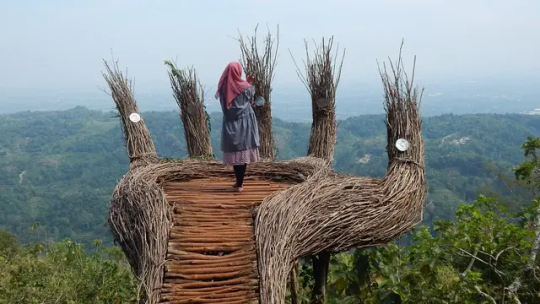
In an era where environmental awareness is at the forefront of global consciousness, the pursuit of eco-conscious vacation spots has become a top priority for discerning travelers. This guide invites you to explore destinations that not only captivate with their natural beauty but also demonstrate a commitment to sustainable practices. Discover the allure of these nature-centric havens, where every moment is an opportunity to tread lightly on the Earth.
1. Costa Rica: Pioneering Eco-Tourism
Nestled in the heart of Central America, Costa Rica has long been celebrated as a pioneer in eco-tourism. With its lush rainforests, diverse ecosystems, and abundant wildlife, the country beckons eco-conscious travelers. Explore the Monteverde Cloud Forest, where suspended bridges provide an immersive experience in the canopy, or witness sea turtles nesting on the pristine beaches of Tortuguero National Park. Costa Rica's commitment to conservation is evident in its national parks, protected areas, and sustainable tourism initiatives.
2. Vancouver Island, Canada: Pacific Paradise
For those seeking an eco-conscious retreat, Vancouver Island off the coast of British Columbia offers a pristine haven. Known for its diverse landscapes, from temperate rainforests to rugged coastlines, the island provides opportunities for sustainable adventures. Explore the old-growth forests of Cathedral Grove, witness orcas and humpback whales in the Salish Sea, and support local eco-friendly accommodations. Vancouver Island showcases Canada's commitment to environmental preservation and responsible tourism.
3. Iceland: A Symphony of Sustainability
Iceland, with its otherworldly landscapes and commitment to clean energy, stands as a shining example of sustainable tourism. The country harnesses geothermal power for heating and electricity, minimizing its carbon footprint. Explore the mesmerizing landscapes of the Golden Circle, unwind in the Blue Lagoon's geothermal waters, and embark on eco-friendly excursions to witness the Northern Lights or traverse glaciers. Iceland's dedication to preserving its untouched beauty makes it an ideal destination for eco-conscious travelers.
4. Bhutan: Gross National Happiness and Sustainability
Nestled in the Eastern Himalayas, Bhutan is not only renowned for its breathtaking landscapes but also for its unique approach to development—measured by Gross National Happiness rather than GDP. The kingdom's commitment to sustainability is evident in its "high-value, low-impact" tourism policy, ensuring that visitors experience the pristine environment responsibly. Trek to the Tiger's Nest monastery, immerse yourself in traditional festivals, and witness the vibrant culture of a nation deeply connected to its natural heritage.
5. New Zealand: A Tapestry of Green Tourism
New Zealand's commitment to preserving its natural beauty and fostering green tourism makes it an eco-conscious traveler's dream. From the fjords of Milford Sound to the geothermal wonders of Rotorua, New Zealand showcases a tapestry of landscapes. Engage in sustainable activities such as hiking the Abel Tasman Coast Track, exploring glowworm caves, and supporting local conservation projects. The country's "Tiaki Promise" encourages responsible travel, ensuring that visitors leave only footprints and take only memories.
6. Patagonia, Chile and Argentina: Wilderness Untouched
Straddling the southernmost regions of Chile and Argentina, Patagonia is a vast wilderness that captivates with its untouched landscapes. With a commitment to conservation, eco-friendly lodges, and responsible trekking practices, Patagonia invites travelers to experience the raw beauty of nature. Hike through Torres del Paine National Park, cruise through the Beagle Channel, and witness the Perito Moreno Glacier—a testament to the region's dedication to environmental preservation.
7. Palau: Coral Reefs and Marine Conservation
In the western Pacific Ocean, Palau emerges as a haven for marine enthusiasts committed to sustainable tourism. Recognized as a UNESCO Biosphere Reserve, Palau places a strong emphasis on coral reef conservation and responsible diving practices. Snorkel in the crystalline waters of Jellyfish Lake, explore the Rock Islands, and support initiatives that protect Palau's marine biodiversity. This Micronesian archipelago is a testament to the delicate balance between tourism and environmental preservation.
8. Norway: Fjords, Glaciers, and Green Living
Norway's dramatic fjords, expansive glaciers, and commitment to green living make it a prime destination for eco-conscious travelers. The country's extensive network of electric vehicle charging stations reflects its dedication to sustainable transportation. Cruise through the iconic Geirangerfjord, witness the Northern Lights in Tromsø, and explore the Arctic wilderness in Svalbard—all while supporting a nation dedicated to minimizing its ecological footprint.
9. Tasmania, Australia: Wilderness Conservation
Tasmania, an island state of Australia, is a sanctuary for wilderness conservation and eco-conscious exploration. Home to diverse ecosystems, including ancient rainforests and pristine coastlines, Tasmania invites travelers to engage in sustainable practices. Explore the Overland Track in Cradle Mountain-Lake St Clair National Park, encounter unique wildlife, and support local initiatives that focus on preserving the island's natural heritage. Tasmania's commitment to sustainable tourism ensures that its beauty endures for generations.
10. Kenya: Wildlife Conservation and Community Empowerment
Kenya's commitment to wildlife conservation and community empowerment makes it an exemplary destination for eco-conscious travel. The Maasai Mara National Reserve, known for its annual migration of wildebeest, offers an immersive safari experience that supports conservation initiatives and local communities. Engage in responsible wildlife viewing, witness the Great Rift Valley, and contribute to Kenya's efforts to protect its natural heritage.
These eco-conscious vacation spots not only showcase the beauty of the natural world but also exemplify a commitment to sustainable practices. Whether it's the lush rainforests of Costa Rica, the pristine fjords of Norway, or the vibrant coral reefs of Palau, each destination invites travelers to become stewards of the environment.
Read the full article
0 notes